Manage environments
How to manage and run Optimizely Feature Experimentation in isolated environments, like development or staging.
Optimizely Feature Experimentation lets you confirm behavior and run flags in isolated environments, like development or staging. This makes it easier to deploy targeted deliveries and experiments in production safely. For example, you could run a single experiment in some contexts and pause it in others, or you could turn an experiment to test it for your team and leave it off for visitors.
Every Optimizely Feature Experimentation project starts with two environments (and two datafiles).
- Production – Primary environment.
- Development – Secondary environment.
Environments have the following attributes:
| Attribute | Generation | Description |
|---|---|---|
| Environment-specific datafile | Automatically generated | Shows the state of the experiments within that environment. If you created flags and experiments in other environments in your project, they appear "not running" until you start them in this environment. |
| Unique SDK key | Automatically generated | Determines the URL of the environment's datafile, which ensures that the URL is not easily guessed. You can use the SDK key to initialize the SDK with the corresponding environment's datafile. |
| Datafile access token | Automatically generated | If you create a secure environment, then you can fetch the datafile for that secure environment from an authenticated endpoint using this access token. For information, see the initialization topic for your SDK language (server-side only). |
| Environment key | User-provided | This key is used for programmatic access to the environment: for example, if you were to modify your environments using Optimizely's REST API. |
You should also add a Staging environment to your project to use for QA testing before running experiments in your Production environment.
Environment permissions
Note
If your organization uses Opti ID, you must manage users in Opti ID. See the
Opti ID user documentation.
You can control which collaborators have permission to start and stop experiments in an environment. This limits the number of people who can change your experiments' statuses or move them from one environment to another.
You should keep access open to everyone in local or development environments and limit access in production environments. By default, the production environment is limited to Publishers and above.
Secure environments
You can secure your environments. When this setting is enabled, you must pass a datafile authentication token when you send requests to the datafile URL through the SDK. This can provide an additional layer of security and privacy to your flag rules (such as A/B tests) on top of the uniqueness and obscurity of the SDK key.
Important
Server-side only
Optimizely Feature Experimentation recommends using this feature only in projects that exclusively use server-side SDKs and implementation. If you fetch the datafiles in a client-side environment, they may become accessible to end users.
Create environments
To create an environment:
-
Go to Settings > Environments.
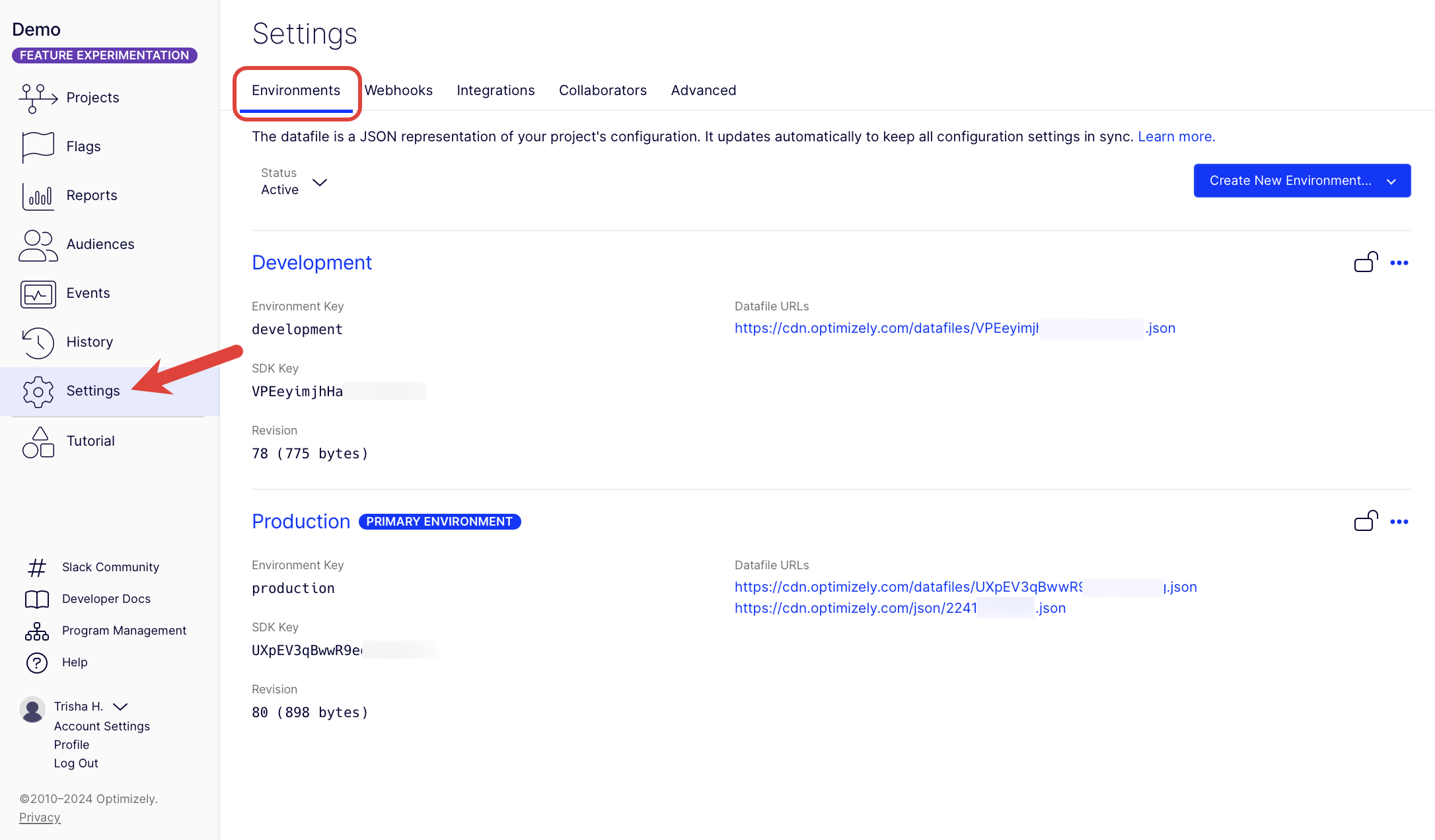
-
Click Create New Environment and choose Environment or Secure Environment.
-
Enter the environment name and key. The key must contain only numbers, letters, and underscores. Specify the permission level you want to set for experiments in the environment.
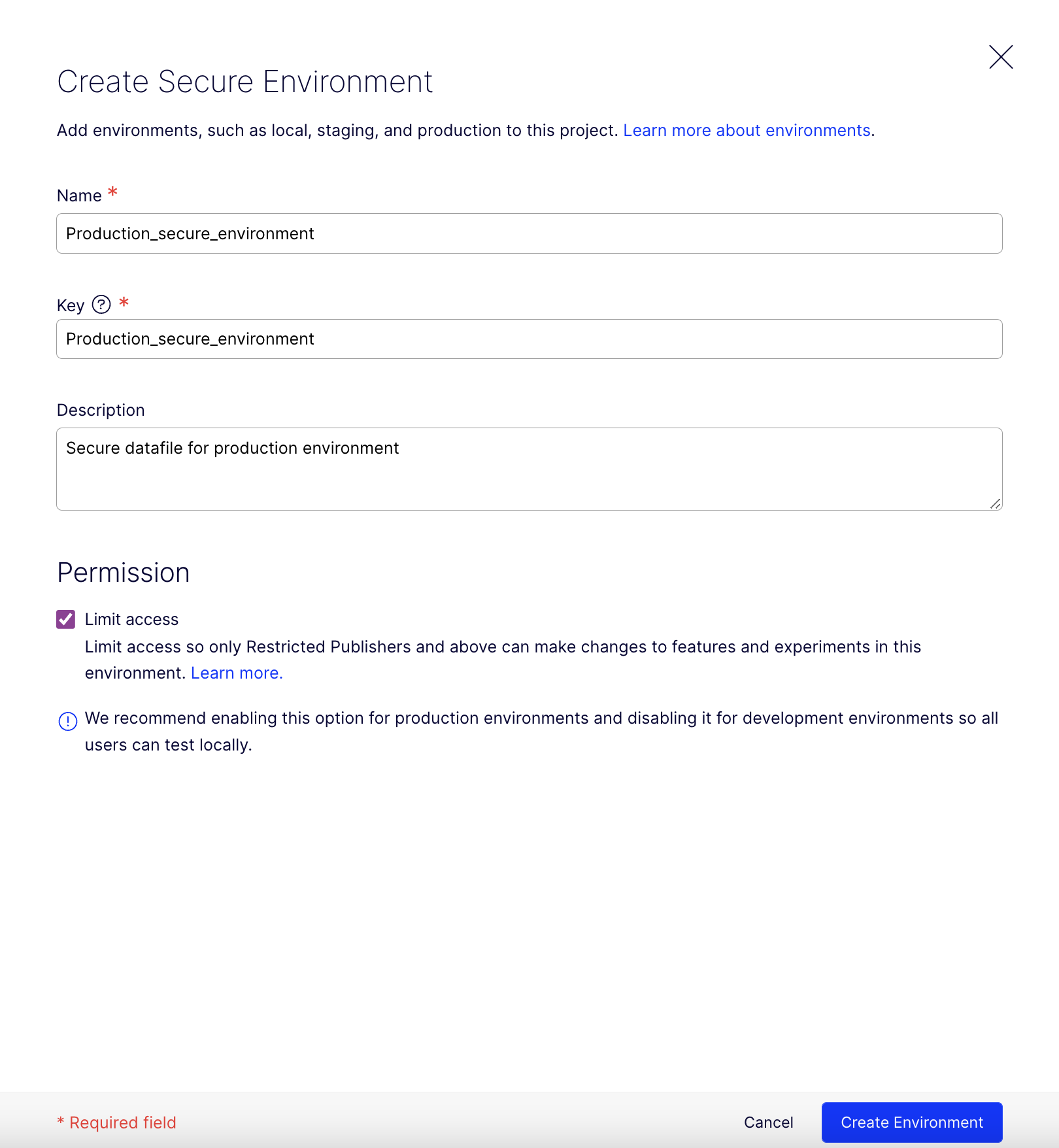
-
Click Create Environment.
The SDK Key and Datafile URL for the new environment are displayed on the Settings page.
Generate an access token
If you created a secure environment, you need to generate an access token. This token must be passed into the SDK to access the datafile. Secure environments are recommended for server-side SDKs only. See Secure environments.
Important
Once you secure an environment, you cannot revert to an unsecured environment.
-
Click Add access token for the newly created environment.
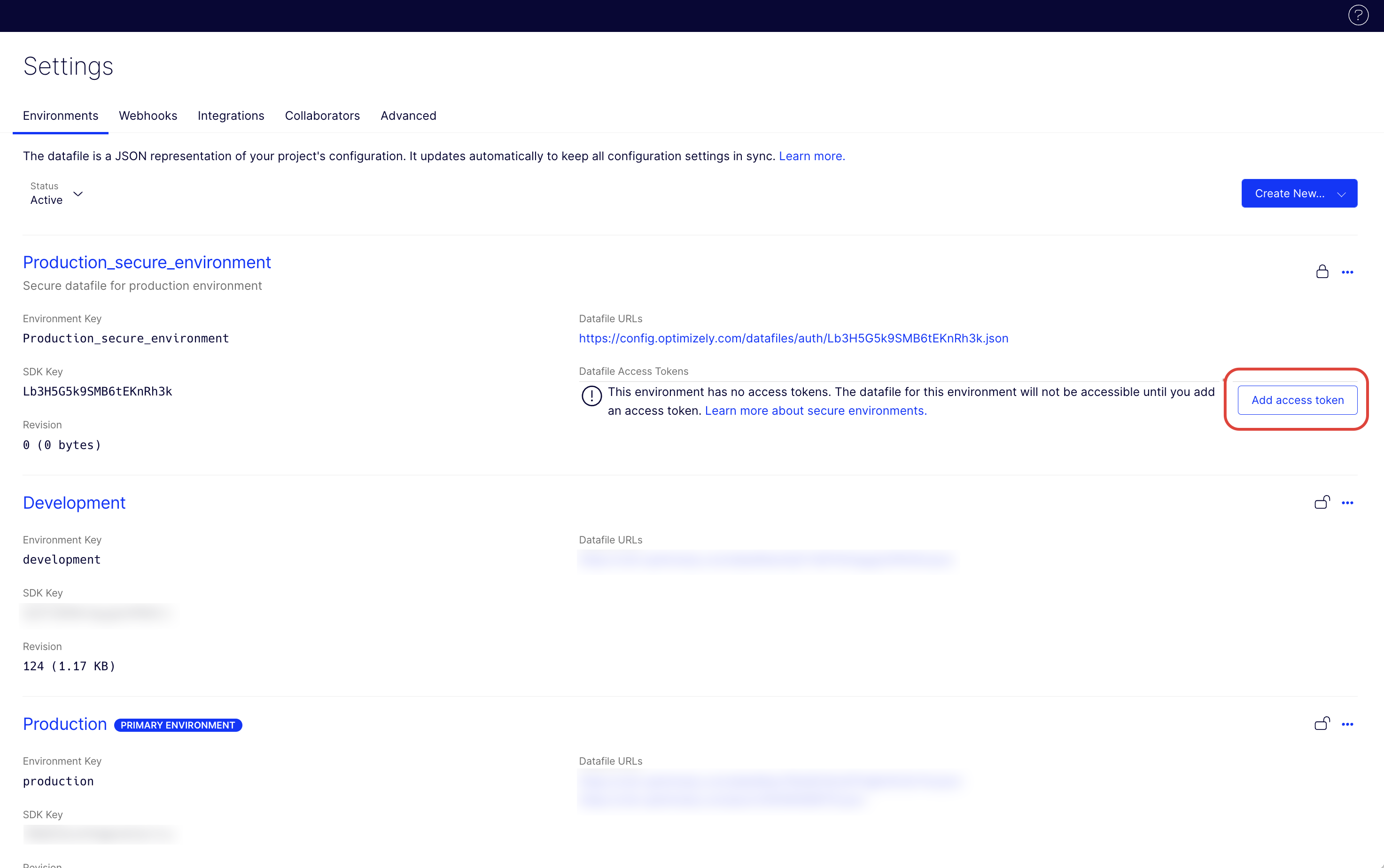
-
Add a Token Name for your access token and click Generate Token.
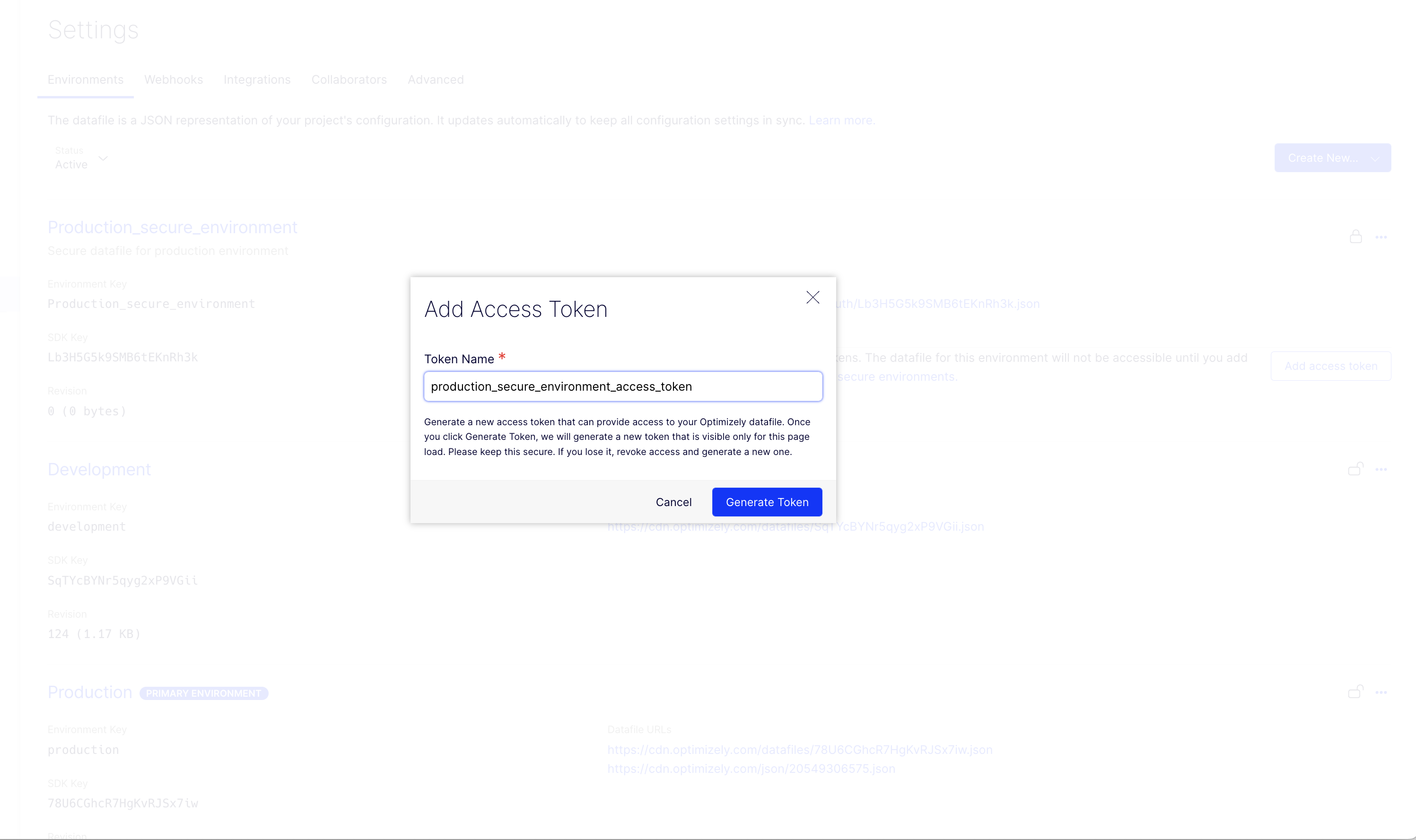
-
Copy the token value from the Settings page. It is visible when you leave the page.
Warning
If you do not copy the token value, you must create a new token.
- Use the generated token as the
access_tokenparameter when initializing the SDK. Select your SDK for information:- C#
- Go
- Java
- JavaScript v6+
- JavaScript (Node) – SDK versions 5.3.5 and below
- PHP
- Python
- Ruby
Note
Experiments are paused by default in any new environments you create, even if they were already running in the default environment.
Convert to a secure environment
You can convert an existing unsecured environment to a secure one from the actions menu. You can tell if an environment is secure by referencing the lock icon on the Settings page.
An unlocked icon indicates a un-secured environment.

unsecured
A locked icon indicates a secure environment.

secured
Important
Once you secure an environment, you cannot revert to an unsecured environment.
-
Click Actions for the environment you want to secure.
-
Click Secure.
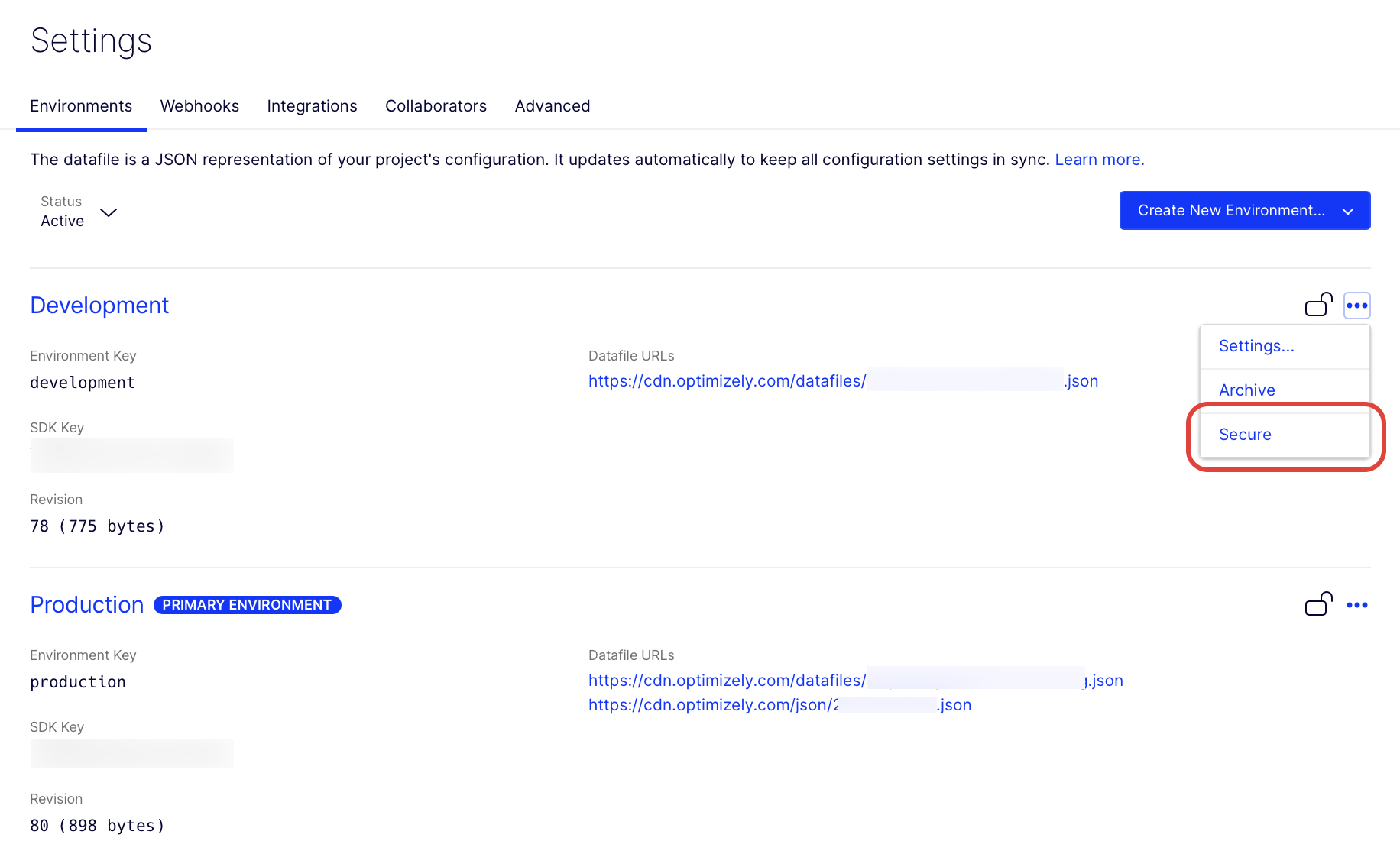
-
Click Secure on the confirmation screen.
-
Follow the instructions for Secure environments - generate access token to complete your secure environment.
Important
Update your SDK implementation
Once you convert to a secure environment you need to update your SDK implementation to initialize with the access token before you can continue to get updates from Optimizely.
(Optional) Remove unsecured datafile
After securing your datafile and updating your application to initialize the SDK with the datafile access token created in the previous step, you can manually remove the cached copy of the datafile for your environment from Optimizely's public CDN.
Warning
You MUST complete steps 1 through 4 in Generate an access token before removing the unsecured datafile. Failure to do so will break your SDK implementation as the SDK will no longer be able to fetch the datafile.
-
Click Actions for the environment you want to remove the public datafile.
-
Click Remove Public Datafile.
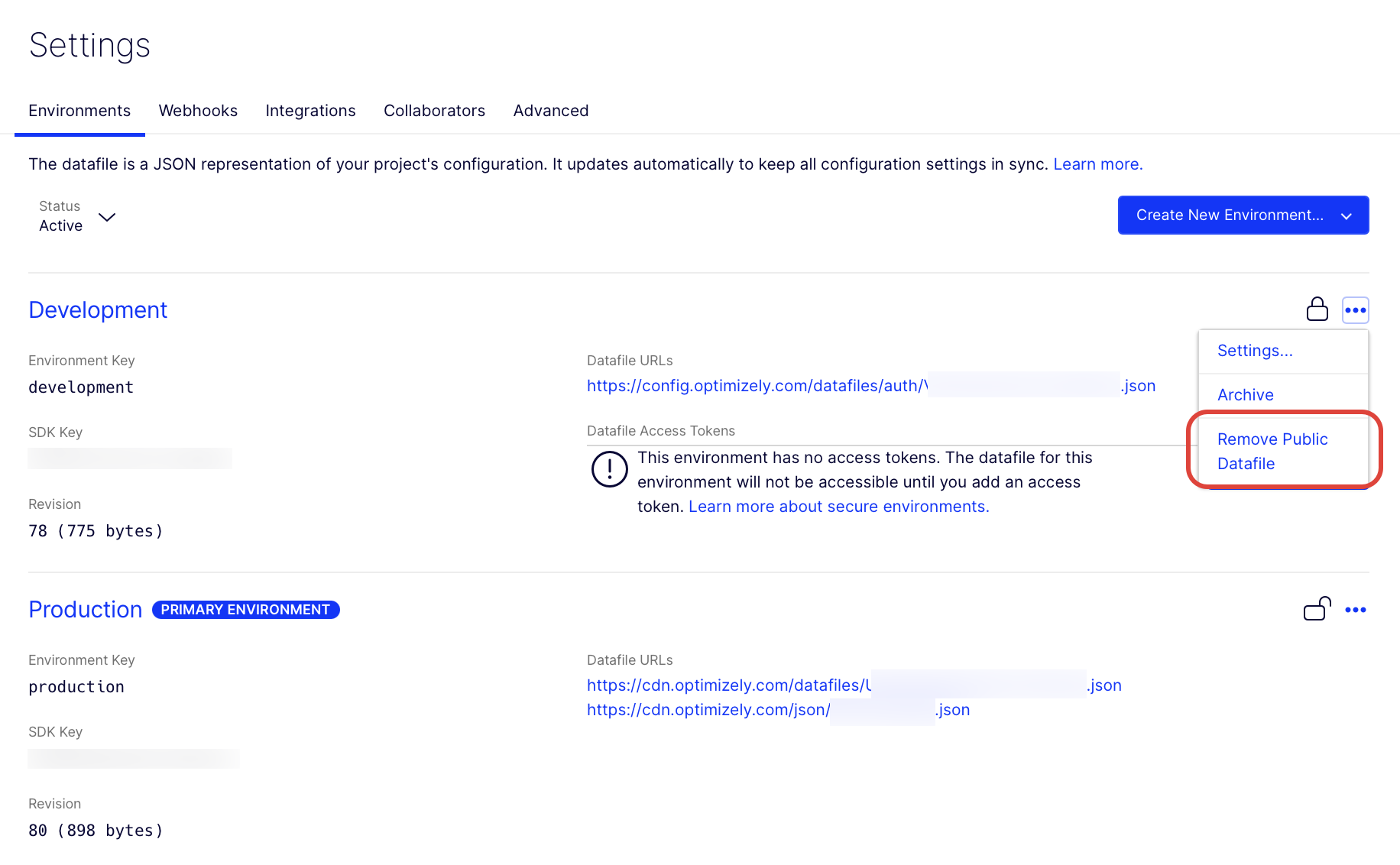
-
Click Remove on the confirmation screen.
Rename an environment
To rename an environment
-
Go to Settings > Datafile.
-
Click Actions for the environment you want to rename.
-
Click Settings.
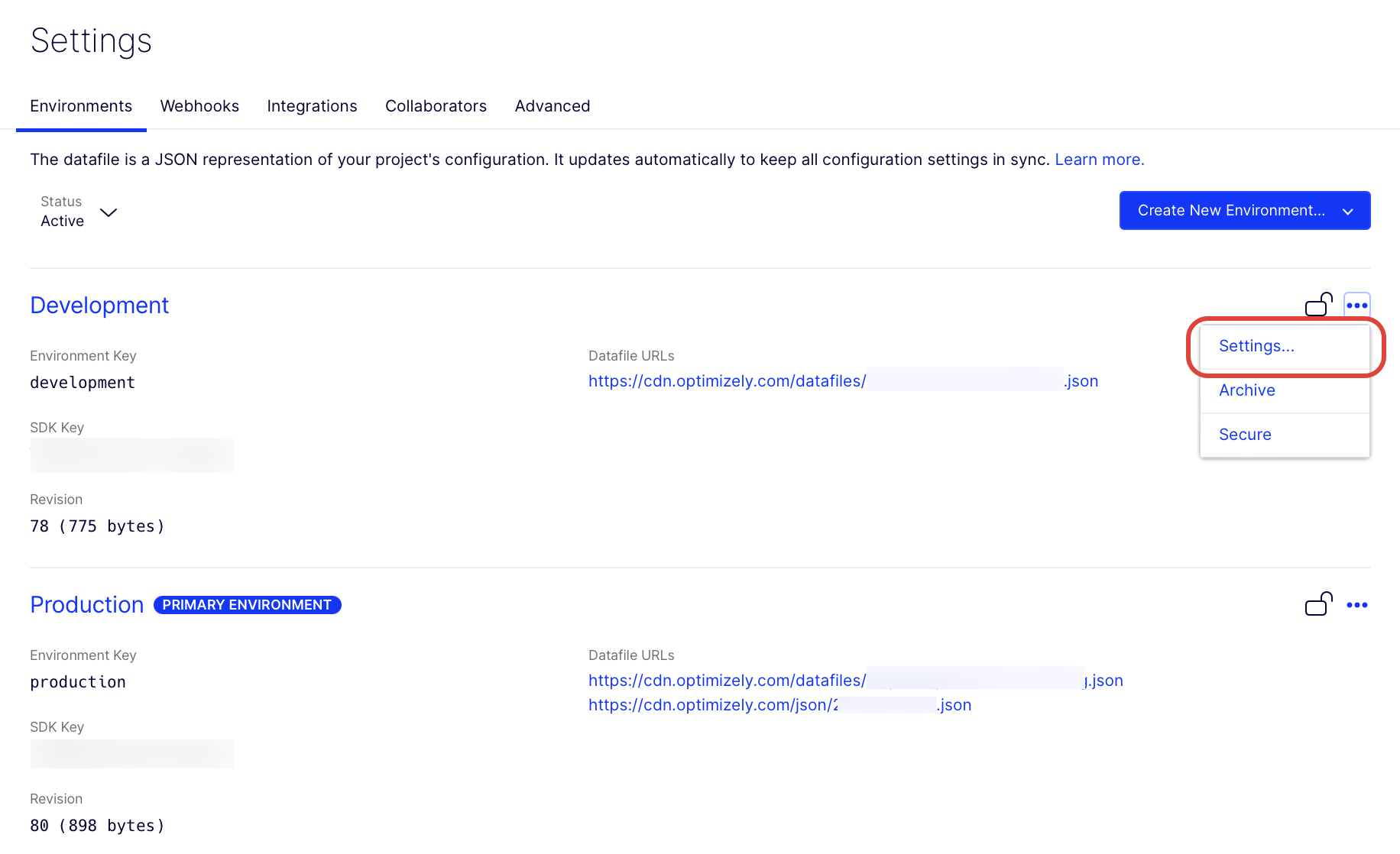
-
Enter the new name for the environment and click Save Environment.
Important
Be careful changing the datafile's environment key as it will impact the datafile URL your code loads.
The environment key displays on the Settings > Datafile page; see the image in View the datafile via the app.
Archive an environment
You can archive environments if they are not being used anymore (except the primary environment, which cannot be archived). Archiving deactivates all the datafiles in an environment, replacing them with an empty file, and removes the environment as an option for experiments.
If experiments are running in the environment when you archive it, they will stop because archiving empties the datafile.
To archive an environment
-
Go to Settings > Datafile.
-
Click Actions for the environment you want to archive.
-
Click Archive.
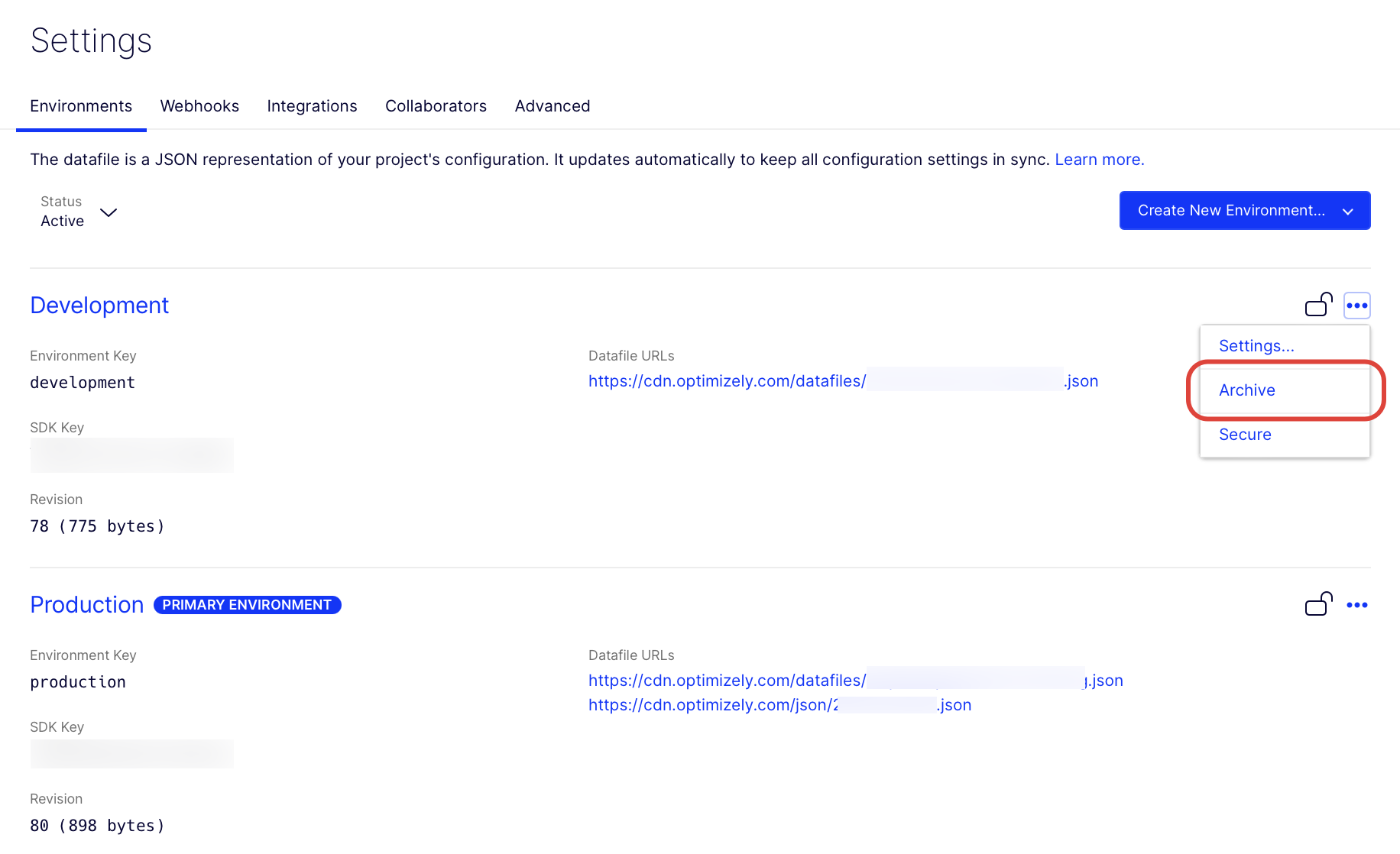
Results by environment
Each environment will have its own reports page. You can switch between your environments to view results for each. Refer to reports for more information.

Updated about 1 month ago